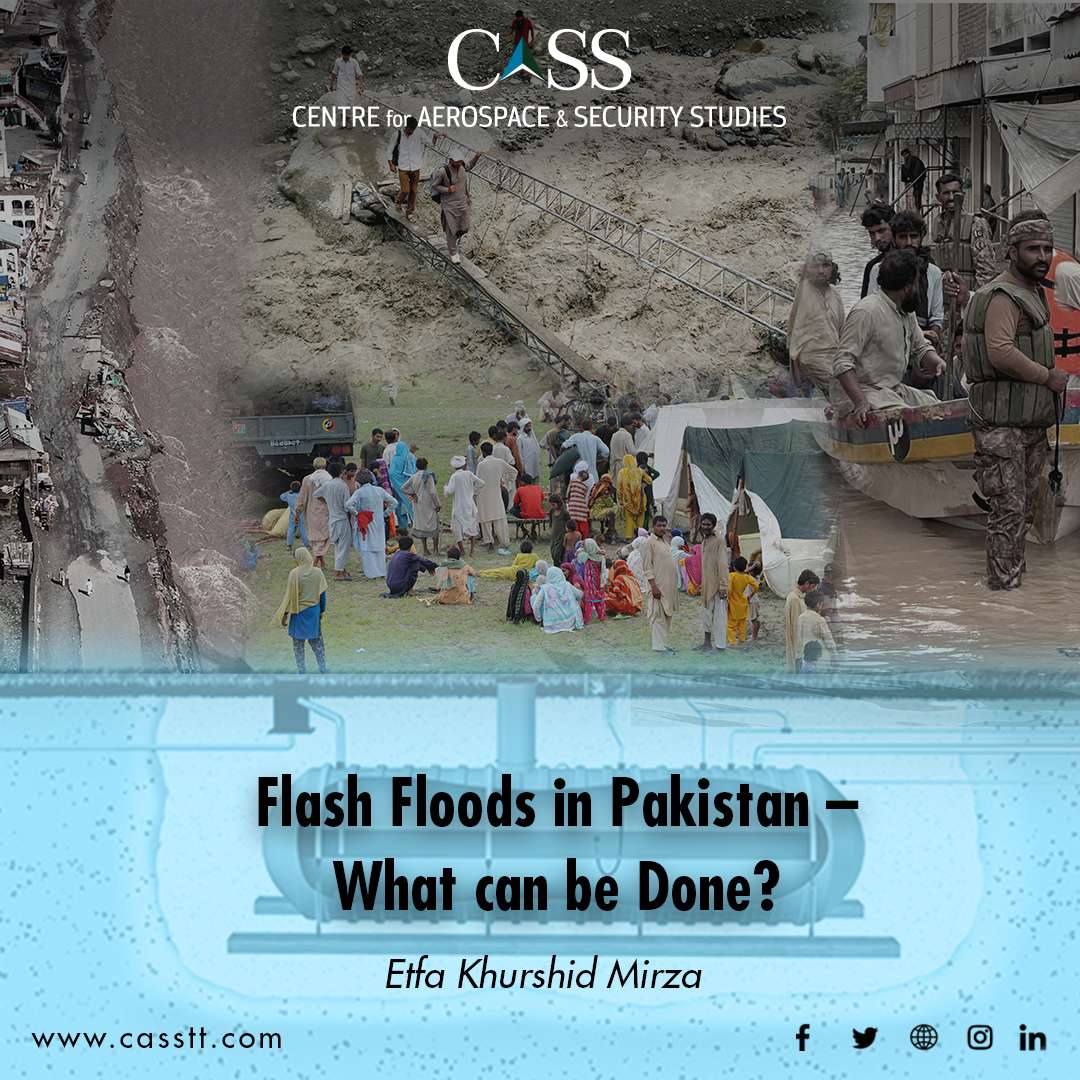The situation after flash floods in Pakistan is becoming worse and more than 60% of the country is immersed in water. These floods have caused huge losses. More than 30 million people are directly or indirectly affected. Moreover, around one million houses, two million acres of crops and orchards, one million livestock, 3500 kilometres of road infrastructure and around 145 bridges have been destroyed so far in this natural calamity. The actual figures could be higher than this. In the days to come, more devastation is probable that could be unprecedentedly worse.
Map and satellite photos show that the areas of Punjab, Khyber Pakhtunkhwa, Balochistan, and Sindh provinces along the Indus River experienced the most devastating floods. Balochistan and Sindh have already experienced rainfall that is five to six times higher than the 30-year average. In Sindh province, the districts of Qambar and Shikarpur have had 500% more rainfall than usual from 1st July to 31st August this year. The impact of the rains may also have intensified due to the melting of Pakistan’s 7,000 glaciers. Recent heat waves and climate change have caused multiple Glacial Lake Outburst Floods (GLOFs) as well.
Rescue and relief efforts are in progress. However, initial help has not yet reached some areas because severe flash flooding has blocked off those areas from the rest of the country. The rising demand for shelter and food has caused a rise in the prices of related items. The next several months are highly critical for Pakistan, as this type of natural disaster impacts microeconomics at the domestic and household level and at the macro level due to massive infrastructural damage that has implications for the entire country. It is estimated that Pakistan has suffered a loss of more than USD10 billion in these catastrophic floods. Keeping in view the magnitude of this calamity, the Government of Pakistan has declared a national emergency and requires assistance from the international community in humanitarian relief efforts.
When it comes to natural disasters, floods are the most hazardous and one of the main causes of loss to human beings in terms of life, land, infrastructure, and economy. Due to human-induced climate change, there will be an exponential increase in such disasters. So, we must learn ways to live with such calamities and think of strategies in order to minimise losses. Concerning human-induced climate change, Pakistan’s share of carbon emissions is less than that of other countries, however, it is the most affected today due to the activities of other more developed states. So, the country must prepare itself accordingly.
Some of the steps that can be taken to avoid a massive loss in the future include decentralised Disaster Risk Reduction Strategies. District governments, headed by experienced and qualified Deputy Commissioners, should be fully equipped to manage such disasters, and carry out rescue and relief operations. District governments, in cooperation with local governments, can establish Flood Risk Management teams and train them to handle such emergencies. Civil exercises should be conducted to check the preparedness level of these teams. First aid training should be compulsory in all institutions to provide initial and immediate medical relief. Risk assessment and mapping should be done for general public understanding and awareness, so in case of an emergency, they cooperate with the local government in evacuating vulnerable areas. The Flood Risk Management teams can also assist in evacuating those areas in case of a flood warning. In this way, loss of life can be minimised.
In metropolitan areas, ‘Underground Water Reservoir Systems’ should be built for rainwater storage, like the one built in Lahore in 2020. The capacity of this tank is 1.5 million gallons. Friendly countries can help Pakistan to build such water storage sites. In countries like Japan and the United States, this type of mechanism has proved to be effective in managing rainwater and avoiding urban flooding. On the same pattern, the Water and Sanitation Agency (WASA) built one in Lahore. Then comes the role of the National Disaster Management Authority (NDMA), according to the NDMA Act 2010, it is supposed to deal with all types of disaster management activities from preparing plans, generating responses, making recovery and carrying out rehabilitation activities. However, it has been under-utilised particularly when it comes to emergencies, such as floods. The Authority is usually seen in action post-disaster, however, there is no pre-disaster management on their part. This needs to change since in the end, it is the Central Government that comes under pressure. A streamlined, holistic effort should be undertaken at all levels without increasing the load of disaster management on the Central Government, as it is overburdened with many other challenges. Provincial governments and their respective departments should shoulder greater responsibility in this respect to manage such catastrophes.
Climate change impacts will vary region-wise. Some areas may experience more drought and others may experience intense floods and rainfall. Since it is becoming a matter of national security, in times to come, those nations who will prepare well to face these calamities, will survive.
Etfa Khurshid Mirza is a Researcher at the Centre for Aerospace & Security Studies (CASS), Islamabad, Pakistan. Her area of interest is warfare and emerging technologies. She can be reached at [email protected]
Keywords: Flash Floods, Pakistan, Climate Change.





